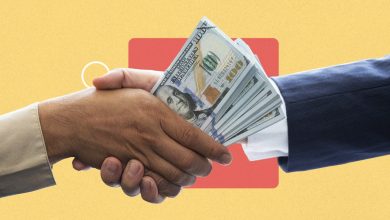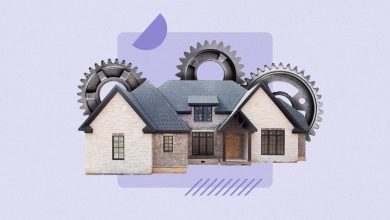
7 tips to save for a down payment while living paycheck to paycheck
Key takeaways
- Thirty-four percent of American workers say they’re living paycheck to paycheck, according to a Bankrate survey. That tight budget makes it tough to save — even more so for large expenses like buying a home.
- Even if you live paycheck to paycheck, get a handle on your budget and spending. This’ll help inform how much house you can afford.
- To more easily save for a down payment when living paycheck to paycheck, focus on lowering expenses, including for recurring bills and discretionary costs.
For Americans living paycheck to paycheck, there’s little room to make progress on goals like getting a mortgage and becoming a homeowner. If you’re set on buying a home but can’t increase your income any time soon, here are tips to help you save for a down payment on a tight budget.
What does living paycheck to paycheck mean?
Put simply, living paycheck to paycheck means having little or no money left over from your wages after covering expenses. Rather, all or most of your paycheck is spent by the time your next paycheck comes.
Thirty-four percent of U.S. workers say they’re living paycheck to paycheck, according to Bankrate’s Living Paycheck to Paycheck Survey, including 40 percent of Gen X workers and 34 percent of millennial workers. Overall, just 19 percent of workers feel satisfied with their pay.
Living paycheck to paycheck can permeate all areas of your life, from spending decisions to mental health. On a practical level, it also makes it difficult or impossible to save for emergencies or major expenses like a car or home. The spate of higher inflation hasn’t helped, especially for would-be homeowners facing increased shelter costs.
7 tips to save for a down payment while living paycheck to paycheck
If you want to buy a home but live paycheck to paycheck, the solution seems obvious: Increase your income so you can save more money at a faster rate.
For many of us, though, that’s easier said than done. While it’s worth asking for a raise or finding ways to make extra cash, most Americans (56 percent) simply don’t have the income today to buy a home, according to Bankrate’s 2024 Home Affordability Report.
The good news: You don’t have to save a full 20 percent for a down payment. If you currently have good credit and enough income to cover rent and any credit card or loan payments, you might be able to qualify for a mortgage with as little as 3 percent down.
Here are tips to get started saving toward that goal:
1. Understand your budget and spending habits
When living paycheck to paycheck, every dollar counts. There are many ways to make a monthly budget, but most boil down to tracking your spending. The sooner you know where your money’s going, the sooner you can make a plan to lower expenses and set aside savings for a home.
2. Establish how much house you can afford
Your homebuying budget depends on many factors, including where you’d like to buy and your income. As a starting point, use our affordability calculator to estimate how much house you can afford.
From there, calculate various down payment amounts. Remember, if you have good credit (a score of at least 620), you might qualify for a mortgage with just 3 percent down.
Keep in mind: Saving for a home goes beyond the down payment. You’ll need to budget for the complete costs of buying a home, including closing costs and moving expenses.
3. Cut back on discretionary expenses
It might require some compromise, but reducing or eliminating discretionary costs could open up your budget more than you think. These expenses include subscriptions, live entertainment, dining out and travel.
Assess any emotional or impulse spending, too. These purchases could be keeping you stuck in the paycheck to paycheck cycle.
The average drinker spent $700 on beer and wine in 2021, according to a Bankrate analysis of U.S. Bureau of Labor Statistics (BLS) and NIAAA data.
4. Lower your bills
Take a look at your recurring bills. You might be able to negotiate costs down, switch providers to save money or otherwise spend more wisely. Here are some ideas:
- 17 ways to save money on groceries
- How to negotiate debt with credit card companies
- How to save on car insurance
The effort to lower bills pays off in more ways than one: It’ll free up your budget so you can save a down payment, and it’ll lower your debt-to-income (DTI) ratio, a key criteria mortgage lenders consider when qualifying you for a loan. The ratio requirements vary based on the type of mortgage, but generally, you don’t want more than 36 percent of your gross monthly income tied up in debt payments.
5. Change up your living situation
Housing is the biggest line item in most budgets, so lowering this cost could help you save for a down payment much faster. If it’s possible, move in with your parents, another relative or roommate, or to a cheaper rental.
If you do decide to move in with family, set expectations from the outset. Consider how your lifestyle and relationship with your relatives might be affected, and discuss whether you’ll help them cover expenses. You also might want to set a firm move-out timeline.
6. Open a high-yield savings account
The upside to elevated inflation: The rates on high-yield savings accounts have increased, which could help grow your down payment savings faster. Once you’ve made room in your budget, send that extra money to a dedicated account by way of automated withdrawals. (If you’re already living paycheck to paycheck, you might not even miss these funds.)
How to make a zero-based budget
7. Find down payment help
Even if you’re not ready to make a down payment just yet, get in touch with your state’s housing finance agency. Among many responsibilities, this organization helps connect homebuyers — typically those with lower or moderate incomes — with more affordable mortgages and down payment assistance. You can find your state’s agency here.
Some banks and mortgage lenders offer their own forms of down payment help, too. In addition, your family might be in a position to chip in with gift funds. Take the time to explore all avenues to help supplement your savings.
FAQ
-
No. You don’t need a 20 percent down payment to buy a home. Depending on your credit and needs, conventional mortgages can be had with as little as 3 percent down; FHA loans are available with 3.5 percent down; and VA and USDA loans don’t require a down payment at all.
-
There are many types of down payment assistance programs, but in general, they’re targeted toward first-time homebuyers, lower- to moderate-income buyers or buyers in certain locations. You can confirm your eligibility with the program’s administrator or your mortgage lender.
-
Thirty-four percent of U.S. workers say they’re living paycheck to paycheck, according to Bankrate’s Living Paycheck to Paycheck Survey.
-
It depends on who you ask. The median U.S. family income in 2024 is $97,800, according to the U.S. Department of Housing and Urban Development. Forty-five percent of U.S. workers with incomes less than $40,000 a year say they’re living paycheck to paycheck, according to Bankrate’s Living Paycheck to Paycheck Survey — the highest share across incomes.



